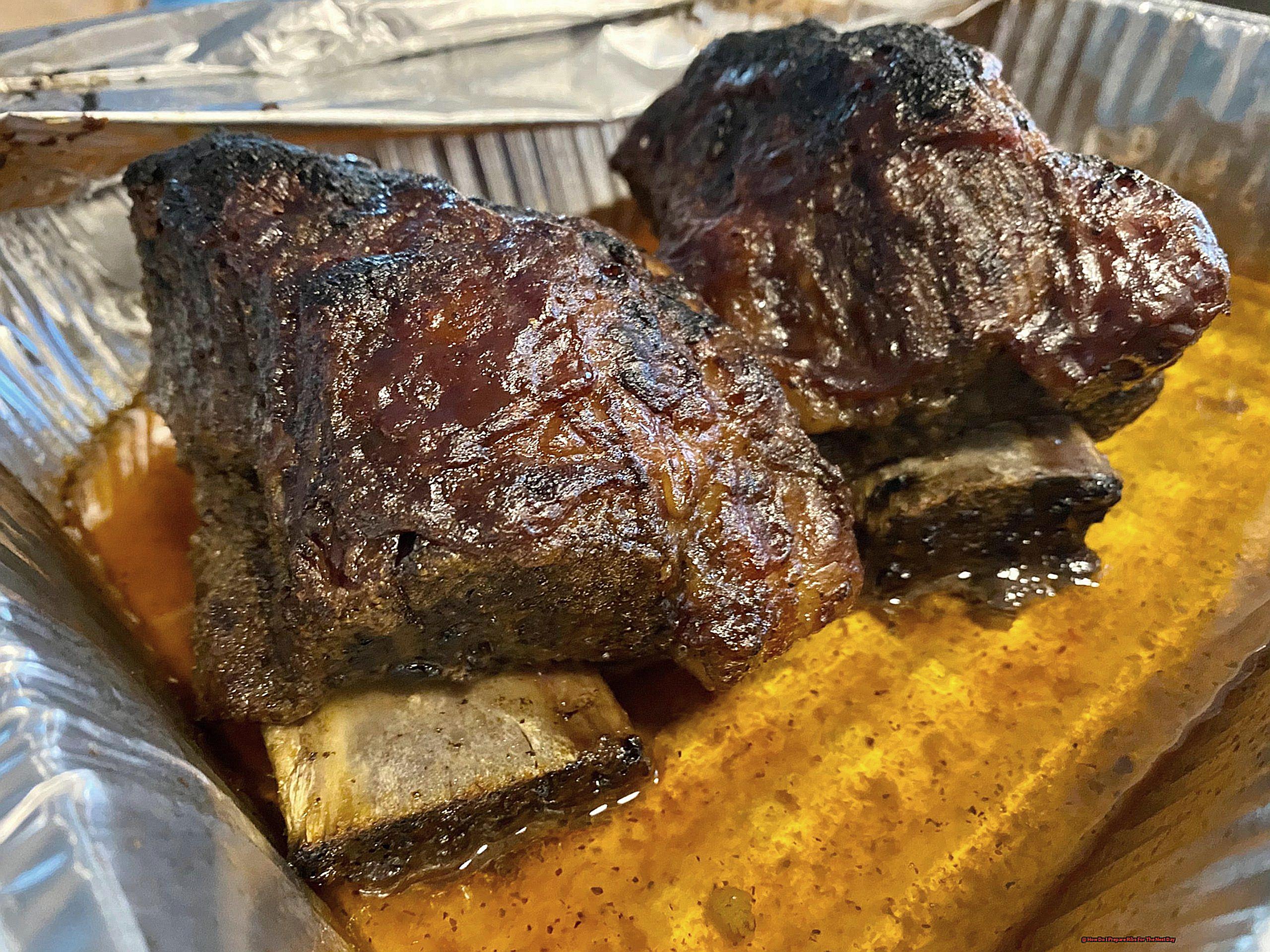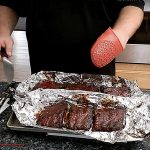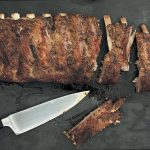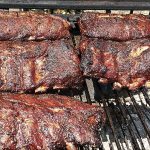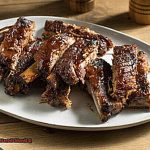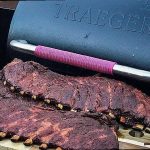Are you ready to elevate your rib game and impress your taste buds? Look no further, because we have all the insider tips and tricks for preparing the perfect ribs for a mouth-watering meal the next day. From marinades that pack a punch to cooking methods that will leave you drooling, we’ve got you covered.
The key to tender and flavorful ribs lies in the preparation. And we’re not talking about just slapping on some BBQ sauce before throwing them on the grill. No, no – we’re talking about marinating those bad boys overnight. This allows the flavors to fully infuse into every inch of meat, resulting in a truly delectable experience.
But before you get to marinating, it’s important to choose the right type of ribs. Baby back or spare? It may seem like a small decision, but it can make all the difference in taste and texture. We’ll break down the differences for you so you can make an informed choice.
Now let’s talk cooking methods – slow cooking or grilling? Both have their merits, but which one reigns supreme when it comes to ribs? We’ll give you all the juicy details (pun intended) so you can decide which method suits your preferences.
And let’s not forget about the sides. Ribs are great on their own, but they’re even better with some delicious accompaniments. We have some mouth-watering suggestions that will take your rib feast to the next level.
But what do you do with leftover ribs? Fear not, we have tips for reheating them without drying them out. Because let’s be real – there’s nothing worse than dry ribs.
So, get ready to wow your friends and family with your newfound rib expertise. Follow our guide on preparing ribs for the next day and get ready for a flavor explosion that will leave everyone wanting more. Let’s fire up that grill.
Contents
- 1 How Do I Prepare Ribs For The Next Day?
- 2 The Importance of Properly Storing Ribs After Cooking
- 3 Refrigeration Tips for Keeping Ribs Safe and Delicious
- 4 Reheating Ribs: Avoiding Common Mistakes
- 5 The Best Way to Reheat Ribs: Using Your Oven
- 6 Adding Moisture or Sauce to Prevent Dry Ribs
- 7 Partially Cooking Ribs in Advance for Time-Saving BBQs
- 8 Conclusion
How Do I Prepare Ribs For The Next Day?
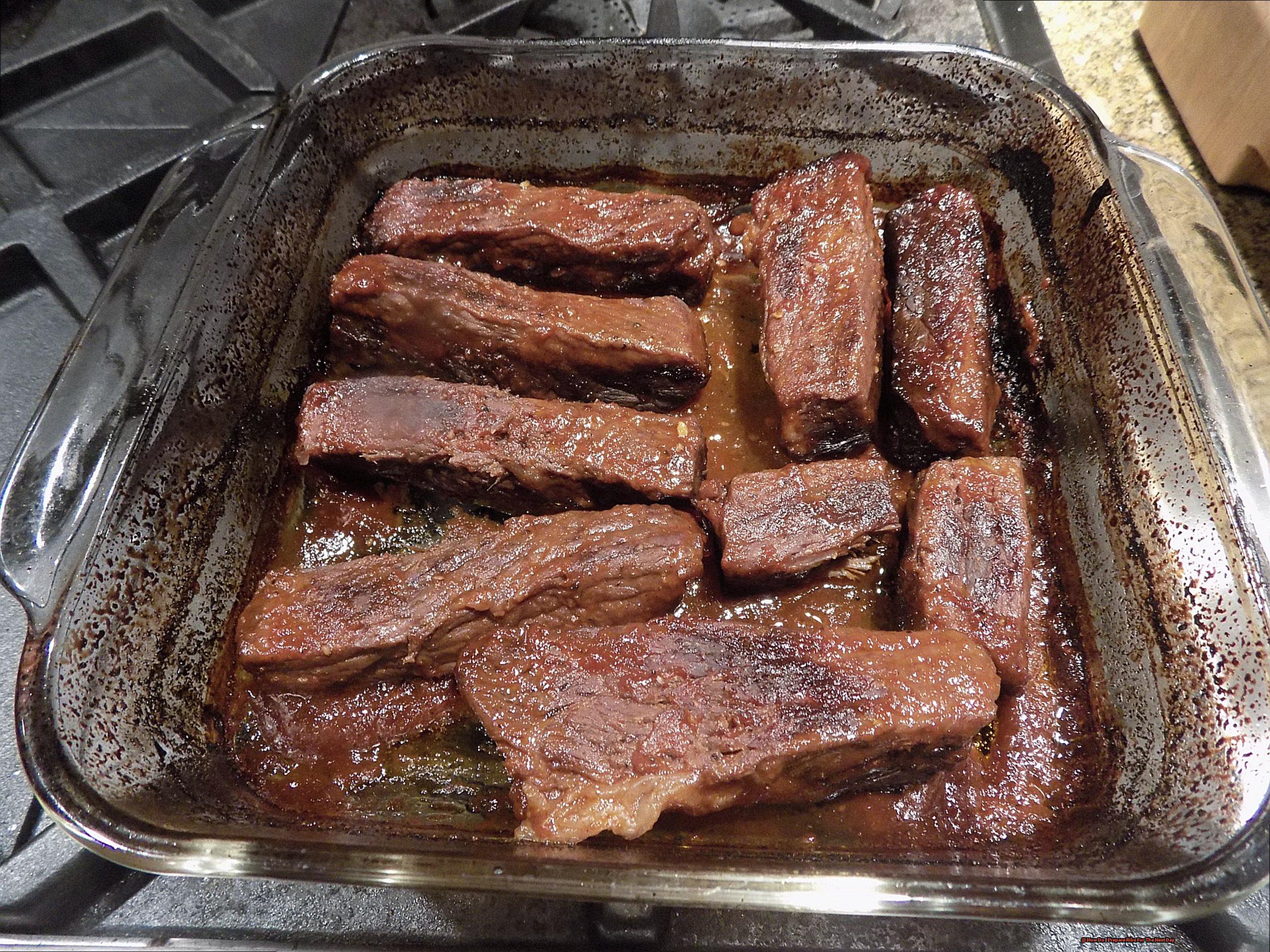
To ensure that your next BBQ is a success, it is crucial to properly prepare your ribs the day before cooking. Here are some helpful tips to guarantee perfectly cooked and juicy ribs:
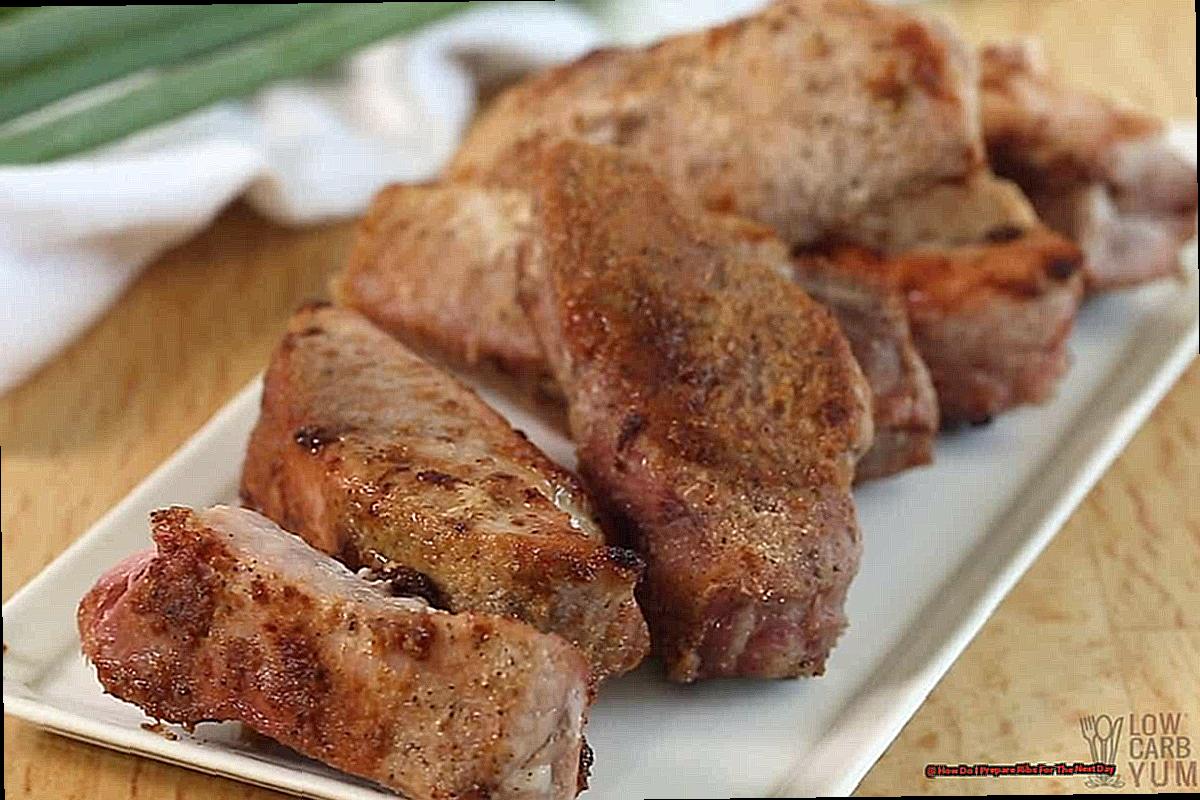
- Remove skin and trim excess fat: Before cooking, make sure to remove the skin from the ribs and trim off any extra fat. This will prevent the ribs from becoming too greasy and ensure even cooking.
- Let ribs sit at room temperature: About an hour before cooking, take the ribs out of the refrigerator and let them sit at room temperature. This will help them cook more evenly and prevent toughness.
Preheat oven: Set your oven to 300 degrees Fahrenheit.
- Lightly coat baking sheet with oil: To prevent sticking, lightly coat a baking sheet with oil before placing the ribs on it.
- Bake for 30 minutes: Place the pork ribs on the baking sheet, making sure they are not touching each other. Bake for 30 minutes until slightly browned and fully cooked.
- Allow ribs to cool: Once cooked, remove the ribs from the oven and let them cool before adding them to the grill.
- Store properly in fridge: Store ribs in an airtight container or tightly wrapped in foil in the refrigerator until ready to cook.
- Reheat in oven: Avoid using the microwave when reheating ribs as it can result in dry meat. Instead, reheat in the oven at 300 degrees Fahrenheit for 15-20 minutes, checking periodically to avoid overcooking.
- Add sauces and marinades: For saucy ribs, add extra sauce before reheating to prevent drying out. For dry rub ribs, consider adding moisture such as apple juice or broth before reheating.
- 10. Partially cook day before: Save time on BBQ day by partially cooking the ribs beforehand. Cook them in the oven for 2 hours at a low temperature (around 225 degrees Fahrenheit), and finish them off on the grill the next day for a delicious smoky flavor.
The Importance of Properly Storing Ribs After Cooking
Ensuring that cooked ribs are properly stored is essential for maintaining their freshness and safety for consumption the following day. Here are some of the most effective methods for storing cooked ribs:
- Place in shallow, airtight containers and refrigerate: After cooking your ribs, allow them to cool before transferring them to shallow, airtight containers. This will prevent bacterial growth and preserve their moisture.
- Wrap tightly in foil: Alternatively, you can wrap your cooked ribs tightly in foil before refrigerating. This will also help retain their moisture and protect against any contamination.
- Refrigerate for 3-5 days: Cooked ribs can typically last 3-5 days in the refrigerator. Be sure to label the containers with the date so you know when to consume them by.
- Freeze for longer storage: For extended storage, freezing is an excellent option. Wrap the ribs tightly in foil or place them in freezer-safe bags before freezing. Frozen ribs can last up to 6 months.
- Properly thaw before reheating: When ready to eat, make sure to thaw your frozen ribs properly before reheating. You can do this by placing them in the fridge overnight or using the defrost setting on your microwave.
In summary, proper storage of cooked ribs involves refrigerating or freezing them in shallow, airtight containers or tightly wrapped in foil. Remember to label and consume within a few days if refrigerated or within 6 months if frozen to ensure freshness and safety for consumption the next day.
Refrigeration Tips for Keeping Ribs Safe and Delicious
Storing leftover ribs in the refrigerator requires proper technique to maintain their safety and mouth-watering flavor for the next day. Here are some best practices to follow:
- Cool Down Completely: Before storing the ribs, make sure they have completely cooled down. Use an airtight container or tightly wrap them in foil. Avoid storing hot or warm ribs, as this encourages bacteria growth.
- Refrigerate Immediately: It is important to refrigerate the ribs as soon as possible, preferably within 2 hours of cooking. Place them in the coldest part of your fridge and consume within 3-4 days for optimal taste.
- Reheat in the Oven: Avoid using the microwave to reheat ribs, as this can result in dry and chewy meat. Instead, tightly wrap the ribs in foil and reheat them in a preheated oven at 300 degrees Fahrenheit for 15-20 minutes.
- Consider Sauces and Marinades: If reheating saucy ribs, add extra sauce before wrapping them in foil to prevent them from drying out. For dry rub ribs, consider adding some moisture before reheating to keep them tender and juicy.
- Partially Cook the Day Before: To save time on the day of your BBQ, partially cook the ribs the day before by cooking them at a low temperature (225 degrees Fahrenheit) for 2 hours and finishing them off on the grill the next day.
- Freeze for Longer Storage: Leftover cooked ribs can be frozen for up to 3 months. Thaw them in the refrigerator before reheating for best results.
By following these best practices, you can ensure that your leftover ribs remain safe and delicious when stored in the refrigerator for the next day. Always remember to properly store, refrigerate, and reheat your ribs to avoid any risk of foodborne illnesses.
Reheating Ribs: Avoiding Common Mistakes
When preparing to reheat ribs for the following day, it is crucial to avoid making mistakes that could result in dry, overcooked, or spoiled meat. Some of these errors include:
- Using high heat: Reheating ribs at a high temperature can cause them to become dry and tough. It is best to use a slow and gentle method to warm the ribs without overcooking them.
- Overcooking: This goes hand in hand with using high heat. Overcooking the ribs can lead to tough and dry meat that is not as enjoyable to eat. It is essential to monitor the internal temperature of the ribs and remove them from heat once they reach 145°F.
- Improperly storing the ribs: Properly storing leftover ribs is crucial in preventing them from spoiling. They should be refrigerated or frozen within four hours of being smoked, and reheated or frozen within four days.
- Using the microwave: While it may seem like a quick and easy option, reheating ribs in the microwave can result in dry meat. If using this method, it is recommended to add moisture by placing a damp paper towel over the ribs or adding a bowl of water in the microwave while reheating.
- Not checking for signs of spoilage: Before reheating your leftover ribs, it is crucial to check for any signs of spoilage such as changes in appearance, smell, or texture. If any of these are present, it is best to discard the ribs.
The Best Way to Reheat Ribs: Using Your Oven
When reheating ribs in the oven, the recommended temperature is 250 degrees Fahrenheit. However, the cooking time can vary depending on the thickness and amount of ribs. Typically, it takes 20-30 minutes to reach the desired temperature.
| Temperature | Cooking Time |
| 250 degrees Fahrenheit | 20-30 minutes |
To ensure the ribs are evenly cooked and do not dry out, it is crucial to preheat the oven to 250 degrees Fahrenheit before reheating. Additionally, taking the ribs out of the fridge 30 minutes beforehand allows them to reach room temperature, making it easier for them to reheat evenly.
Before reheating, coat the ribs with leftover sauce or BBQ sauce for added flavor and moisture. Then, double wrap them tightly in foil and place them in a baking pan. The foil acts as a barrier, trapping steam to keep the ribs moist and prevent any sauces or juices from spilling out.
The recommended cooking time for reheating ribs in the oven is 20-30 minutes. However, it is important to monitor them closely and use a meat thermometer to check for the desired internal temperature. For safe consumption, the internal temperature should reach at least 165 degrees Fahrenheit.
After the initial heating time, remove the foil and broil the ribs for an additional 5 minutes for a crispy exterior. This step is optional but adds a delicious charred flavor.
Before serving, let the ribs sit for 10 minutes. This allows the juices to redistribute, resulting in tender and juicy ribs.
In summary, to achieve perfectly reheated ribs in the oven, follow these steps: preheat to 250 degrees Fahrenheit, take ribs out of fridge 30 minutes beforehand, coat with sauce, double wrap in foil, and reheat for 20-30 minutes. Remember to check internal temperature and let the ribs sit before serving.
Adding Moisture or Sauce to Prevent Dry Ribs
When preparing ribs for the next day, there are several techniques you can use to add moisture or sauce and prevent them from becoming dry. These methods include using a spray bottle, marinating with liquid marinades, and implementing certain cooking techniques.
WAYS TO ADD MOISTURE OR SAUCE TO PREVENT DRY RIBS:
- Using a spray bottle: As mentioned earlier, regularly spraying your ribs with a liquid can help keep them moist while grilling. This can also be done when reheating the ribs the following day. Simply fill a spray bottle with your desired liquid (such as diluted apple cider vinegar or apple juice) and mist the ribs every 20-30 minutes while reheating in the oven.
- Marinating with liquid marinades: Marinades are an excellent way to add both moisture and flavor to your ribs. You can create your own marinade using ingredients like soy sauce, honey, mustard, and Worcestershire sauce, or you can use store-bought marinades. Simply marinate your ribs overnight before grilling or reheating for maximum flavor and moisture.
- Implementing certain cooking techniques: In addition to using a spray bottle or marinade, there are certain cooking techniques that can help prevent dry ribs. For example, double wrapping the ribs in foil while reheating in the oven will help lock in moisture. You can also place a pan of water under the ribs while they cook to add steam and moisture to the cooking environment.
| Method | How to Use |
| Spray bottle | Mist ribs every 20-30 minutes while reheating in the oven. |
| Liquid marinades | Marinate ribs overnight before grilling or reheating. |
| Cooking techniques | Double wrap ribs in foil or place a pan of water under the ribs while cooking. |
Partially Cooking Ribs in Advance for Time-Saving BBQs
When it comes to preparing ribs in advance for a barbecue, there are various techniques you can use. Some popular options include utilizing a slow cooker or partially cooking them on the stove. The main goal is to not completely cook the ribs, but rather to get them to a tender state before finishing them off on the grill. This can be a time-saving and convenient method when hosting a BBQ event.
To ensure your ribs are cooked to perfection, without sacrificing time or convenience, here are some tips to follow:
- Use a slow cooker: A slow cooker is a great tool for partially cooking ribs in advance. Simply season the ribs and place them in the slow cooker with some liquid (such as apple juice or broth) and let them cook on low for 4-6 hours. This will soften the meat and infuse it with flavor, making it easier to finish off on the grill.
- Parboil on the stove: Another option is to parboil the ribs on the stove. This involves boiling the ribs in water for about 20 minutes before transferring them to the grill. This method helps to tenderize the meat and remove some of the excess fat, resulting in a more flavorful and healthier BBQ dish.
- Don’t overcook: The key to partially cooking ribs in advance is to not fully cook them. You want to bring them to a tender state, but still leave room for finishing them off on the grill. Overcooking can result in tough and dry ribs, so be sure to monitor their tenderness closely.
- Get creative: Partially cooking ribs in advance allows for more convenience when hosting a BBQ event, but also opens up opportunities for creativity. You can experiment with different marinades and sauces, or even try out different cooking methods (such as smoking or using a rotisserie) to add unique flavors and textures to your ribs.
By utilizing these tips and techniques, you can successfully prepare ribs in advance without sacrificing flavor or convenience.
Conclusion
In conclusion, mastering the art of preparing ribs for the next day requires a delicate balance of attention and precision.
From selecting the ideal cut of ribs to marinating them overnight, each step is crucial in creating succulent and flavorful meat. The age-old debate between slow cooking and grilling remains, but ultimately it comes down to personal preference.
And let’s not forget about the accompaniments – they can elevate your rib feast to new heights.
With our expert tips on reheating without drying, you can savor every last bite of those delectable ribs.

